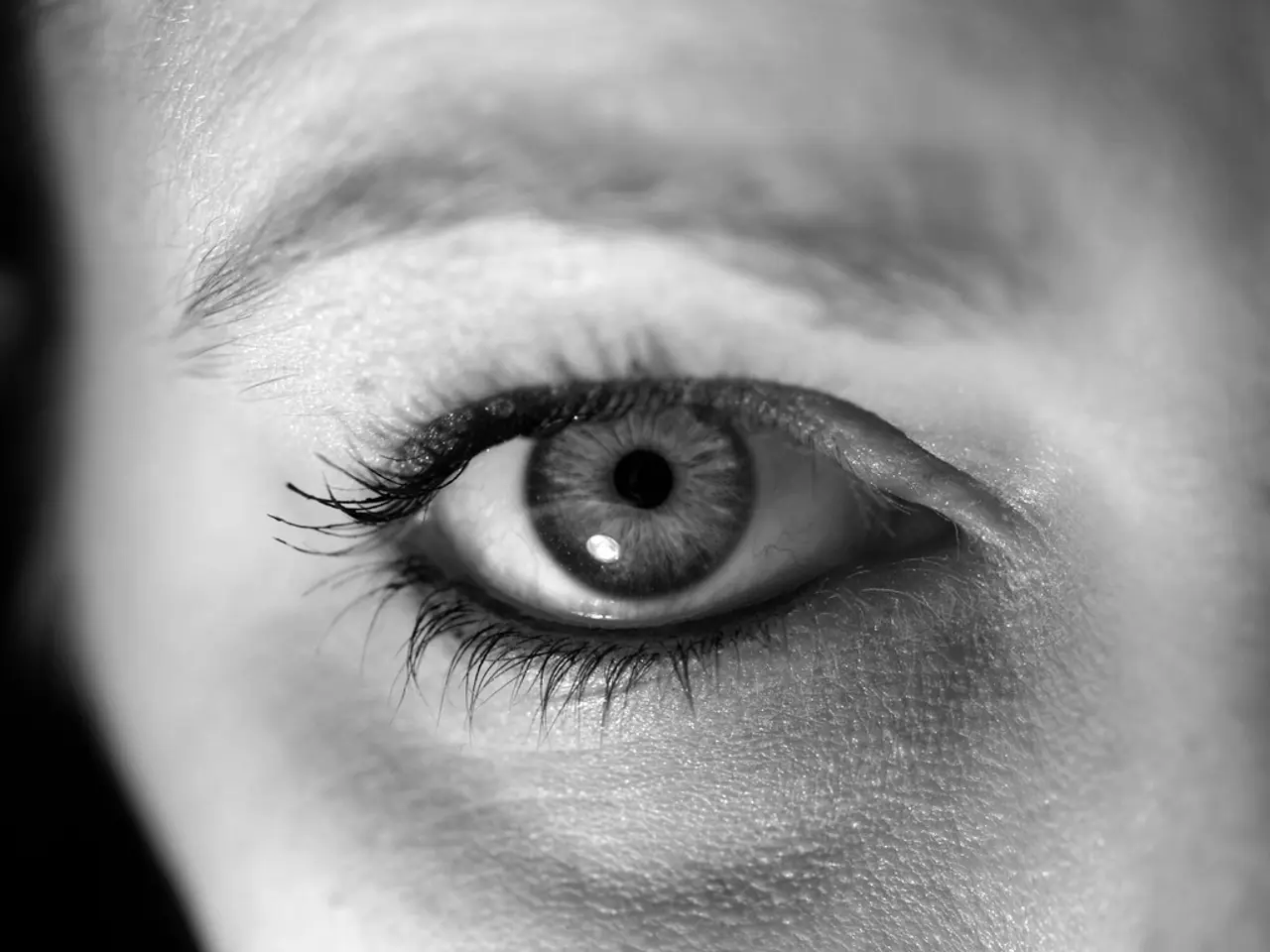Eye Migraines: Triggers, Signs, Remedies, and Additional Information
In the realm of health conditions, migraines are a common affliction, affecting millions worldwide. While headaches are the most well-known symptom, migraines can also manifest in various ways, one of which is ocular migraine.
Ocular migraine, a subtype of migraine, is characterised by visual disturbances that can occur before, during, or after head pain. It is divided into four stages: prodrome, aura, headache, and postdrome. The prodrome stage can last for hours or even days, presenting with changes in mood, fatigue, light and sound sensitivity, insomnia, stomach upset, and muscle tension. The aura stage involves visual impairment, such as tunnel vision, temporary blindness, flashes of light, star-shaped lights, blind spots, jagged lines, black or white dots, waves, crescent shapes, shifting lines or angles, visual snow, colored dots or lights. The headache stage is similar to a typical migraine, with moderate-to-severe head pain, throbbing, pulsing, or pounding head pain, nausea and vomiting, body aches, sensitivity to light, sound, or smell, fatigue, sleep disturbance, muscle tension, dizziness, mood changes. The postdrome stage is characterised by the absence of head pain but the persistence of physical symptoms like body aches, fatigue, dizziness, or sensitivity to light and sound.
Migraine with aura is another subtype where visual impairment occurs before, during, or after the onset of head pain. Approximately 25%-30% of people with migraine experience auras.
Ocular migraine can occur without any head pain, making it crucial to recognise the visual symptoms. On the other hand, retinal migraine involves visual symptoms in one eye before or during a headache, and can potentially lead to permanent vision loss. Similar electrical changes at the back of the eye in the retina are thought to explain the vision symptoms of ocular retinal migraine.
The exact cause of ocular migraine and migraine in general is unknown. However, potential triggers for ocular migraine could include eyestrain, stress, smoking, hormones, high blood pressure, physical exertion, high altitude, dehydration, bending over, low blood sugar, excessive heat exposure, genetics, and more.
For mild cases of ocular migraine, nonsteroidal anti-inflammatory drugs (NSAIDs) like ibuprofen or naproxen may provide relief. If head pain is severe, prescription medications such as tricyclics, antiepileptics, or calcium channel blockers might be recommended.
Speaking with your healthcare team can help limit the chances of permanent visual impairment due to the difficulty in differentiating between ocular migraine with aura and retinal migraine. Lifestyle changes such as smoking cessation, limiting exposure to potential causes of ocular migraine, and avoiding triggers like flashing lights, dehydration, stress or anxiety, too much or too little caffeine, alcohol, sleep deprivation may help manage ocular migraine.
It's also important to maintain proper hydration, as dehydration is listed as a potential trigger for migraine, and the recommended daily water intake is between 2.7 and 3.7 liters. Limiting the amount of time spent staring at screens, using blue light-blocking glasses, and making sure screen angles are optimal may lower the risk of eyestrain.
In conclusion, understanding ocular migraines is crucial for early detection, appropriate treatment, and effective management. If you suspect you might be experiencing ocular migraines, it's essential to consult with a healthcare professional for a proper diagnosis and guidance on how to manage your symptoms.








